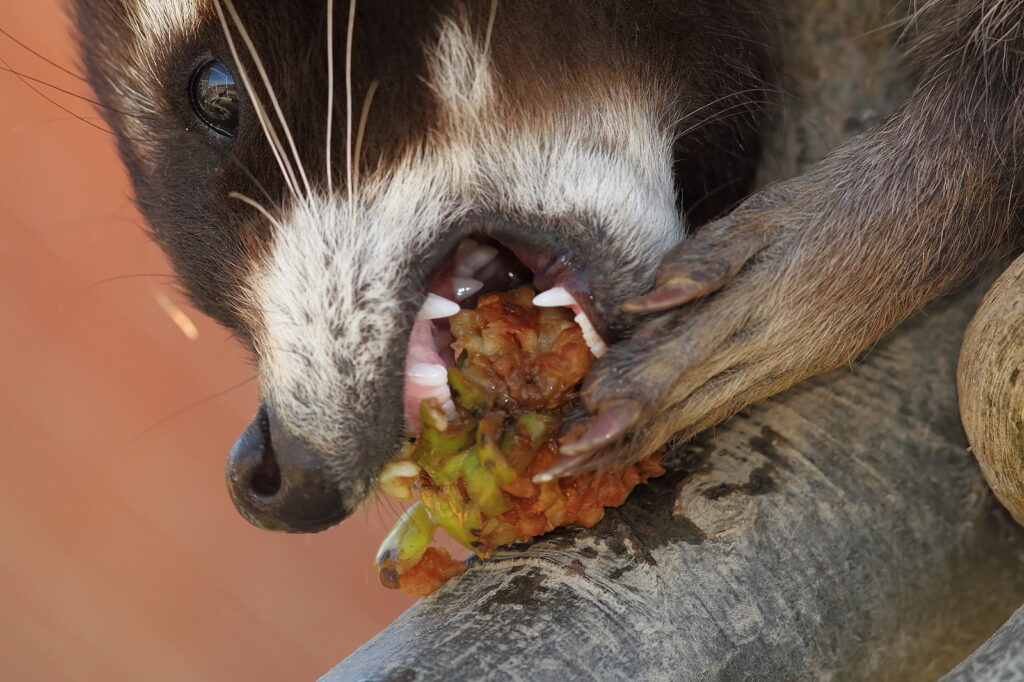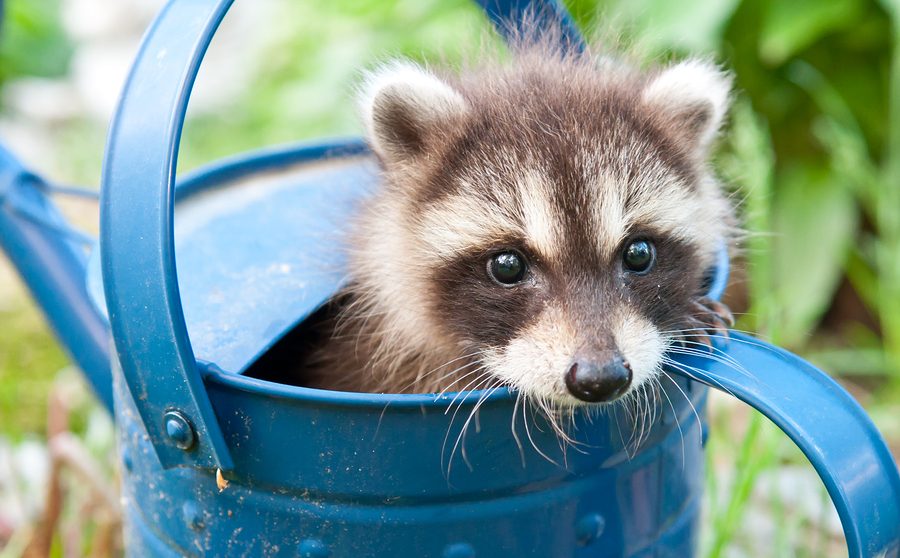Raccoons are common visitors to metropolitan and residential communities. They are smart mammals that have a good memory and remember to go after what they know is accessible. Raccoons have learned that our neighborhoods and cities are perfect spots to grab an easy meal and perhaps some warm shelter as well. For this reason, raccoons have been labeled a nuisance animal in these areas.
Although raccoons are considered nuisance wildlife in urban areas, they are truly delightful critters with many interesting facts to offer. Maybe if you can recognize a raccoon’s diet, you might be able to understand what it is they are after when they trespass onto our properties. With this kind of knowledge, you can perhaps come to respect these mammals, and have a strategy to prevent them from invading your property in the future.
Continue reading to learn just what a raccoon diet looks like, and who to call for professional advice and information regarding raccoon control and more.

What Do Raccoons Eat?
Raccoons are opportunistic eaters. They are omnivores that eat many different varieties of plant life, invertebrates, and vertebrates. In nature, raccoons are fond of fish, frogs, nuts, acorns, berries, fruit, insects, worms, bird eggs, and even larger prey like birds, snakes, and lizards. With so many subspecies of raccoon in the world, their diets vary depending on the region in which they live. Raccoon species that live near ocean eat more shellfish and aquatic wildlife, in contrast to the Northern raccoon which feeds mostly on the foodstuffs we mentioned before.
Raccoons in Urban Areas
Raccoons that trespass onto residential and commercial properties are looking for anything and everything similar to the foods we just discussed. For those who like to take the garbage outside the night before trash pickup day, you might experience higher frequencies of raccoons to your property.
Leaving garbage outside is like giving raccoons, and other nocturnal wildlife, a free invitation to an all-you-can-eat buffet in your driveway. Not only does this habit attract nuisance wildlife, but it also leaves behind a huge mess for you to wake up to. And raccoons will remember your home as a means for food and return night after night looking for more hand-outs.
Raccoons Will Eat Your Other Animal Food
Raccoons also like to eat pet food, bird seed, and even squirrel seed. Properties with pet bowls outside, or even pet food in the garage, have a higher chance of experiencing problems with raccoons than properties that do not take part in such activities. Bird feeders and squirrel feeders are also a big attraction for raccoons. Removing these objects from a property with raccoons can greatly reduce their rate of return, and leave other raccoons disinterested in your home.
If you have a problem with nuisance raccoons, never try to trap or harm them on your own. It requires professional training, tools, and licensing to facilitate any type of raccoon removal service. Contact Indianapolis Raccoon Removal at 317-535-4605 for DNR licensed and insured critter control services for raccoons in Central, Indiana.
You Should Also Read:
How to Make Safe and Humane Raccoon Repellents at Home
How to Spot the Signs of Rabies in a Raccoon
3 Reasons a Raccoon is Dangerous to People and Pets






